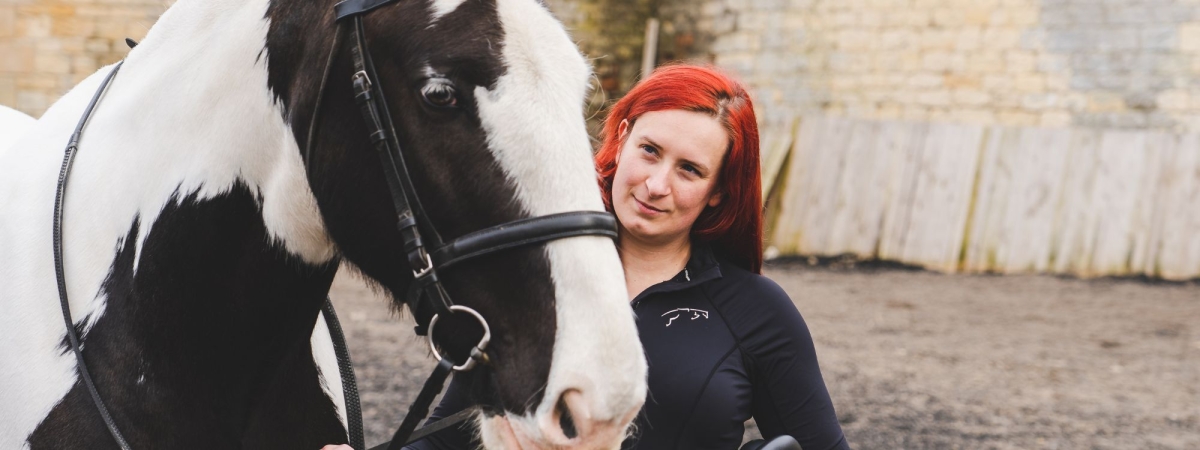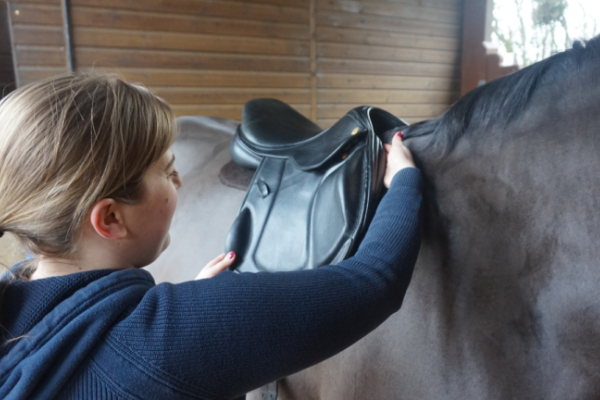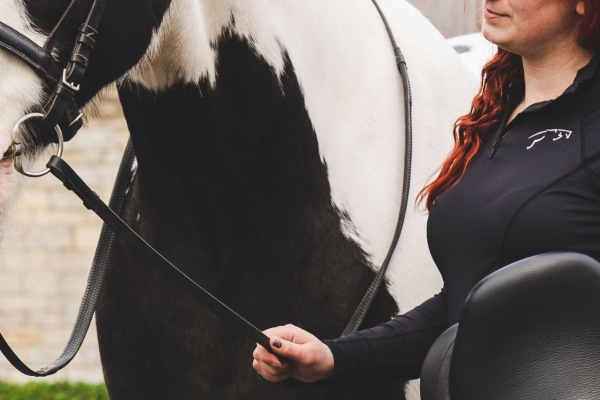Are you a good customer or a bad customer?
We all like to think as customers, of any product or service, that we know best. However, that is not always the case. Saddle fitters are there to help you and your horse perform at your best, in whatever discipline is for you, and ensure both you are comfortable and supported in doing so.
That could be through a forward cut, flat seat, or monoflap XC saddle for absolutely minimal interference, yet optimum close contact with the horse over the largest of fences.
Or maybe a super deep-seated, large knee-blocked dressage saddle to ensure the rider achieves the perfect classical dressage seat.
Whatever your needs, your saddle fitter is there to help you and your horse get the most out of the activities you do together. Finding a good fitter is also a crucial part of the puzzle. However, in this article we will focus on how you can be a good customer, and help your fitter to help you better.
Being a good customer doesn't mean that you smile, talk politely, and make your saddle fitter a lovely warm cup of tea on those horrible cold, wet days. It questions whether you could be a better customer to help your fitter meet your needs better.

How to be a better customer to get the most out of your fitting appointments.
Be clear about what you want and what your budget is, before booking your fitting appointment.
There is really no point in wasting £50-90 on your fitters call out fee to find out that they only sell brand new saddles over £1500 which is way over your £500 budget, or to then to find out this fitter won't touch or fit a second hand saddle that you have sourced online.
You are £50-90 out of pocket, no better off and still won't have a saddle to suit you and your horse. We have been there as that customer, out of pocket and disappointed.
The best approach is to be clear about what your budget is when you make the appointment with the fitter. If you are looking for a leather saddle, but you are on a tight budget, then you may need to go second hand. But you will need to ensure the fitter you call out can supply or fit you with a second hand saddle. If they do not stock second hand saddles, you need to ask them if they are able to help you source a suitable second hand saddle and if they are happy to fit it. If not, its best to work with a fitter who can help meet your needs and your budget.
If you are looking for a high end saddle and want a brand new saddle, you need to ensure the fitter you use has a range of demo saddles for you to try and is able to order in for you if they don't stock brand new on their van.
Be realistic
The saddle is THE most important piece of equipment if you are using your horse for riding purposes. If your budget is £200, you will likely get an old leather saddle, with horrible panels that will cause your horse pain and discomfort, and no doubt an extremely hard uncomfortable seat for you. This takes all the joy out of riding for both you and your horse.
Saving up and investing in a better quality saddle to ensure your horses comfort is really worth it. Your horse will be much happier, and you will be much happier with your horse as he won't want to buck you off, pin his ears back when you come close to him with a saddle, and will be much more willing to do what you ask when riding.
Be willing to learn, learn, learn.
Unless you are a professional working within the equine industry such as a vet, physio, massage therapist, saddle fitter, etc. or you are extremely passionate about horses and spend all your spare time reading, and learning about them, then you probably fall into the average owner category.
The average owner category is a place most of us slip into. We become complacent, and think we know enough about horses. We all have an opinion on the right way of doing things. But this attitude is what can cause our horses pain.
Do you know the name of the muscle in the horses back that you place the saddle on?
Do you know what damage you can cause to the scapula if you place your saddle too far forward? (What even is a scapula?)
Do you know why a horse can only take a certain seat size of saddle?
Do you know how to check what width of saddle you horse should be wearing?
Why are you using the type of girth/pad that you are using?
Maybe you do know the answers to the above, but maybe you don't. If you know and understand more about your horse, and how the saddle interacts with the horse, you will be able to recognise signs of a poor fitting saddle much faster, and report to your fitter what the potential problem could be.
Your fitter will then be able to come out and deal with the situation for you, knowing ALL the facts.
With ignorance you may miss some subtle signs your horse displays daily trying to tell you his saddle doesn't fit. However, with extra knowledge and awareness you may pick these signs up much earlier, instead of just leaving it to your bi annual saddle fitting visit where your horse is looked at for 45 minutes.
Learn more about saddle fit issues here.
Watch as your horse changes shape and be responsive
Understand that your horse will change shape as he/she matures through life, and even throughout the year as the level of work you do changes (likely riding more in the spring/summer/autumn months rather than wet winter months), and as the nutrients in the grass change throughout the year.
Your saddle will need checking, and altering at least twice per year. However some horses may need it checking every 3 months.
Do not think your saddle has been fitted and that's it. Read more about Made to Measure saddles here.
Your horse is not a static, inanimate object. It is a living, breathing creature that will change shape.
You can learn more about taking templates here. This is a great way to keep your own records of your horse, so that if you notice changes, you can call out your saddle fitter to have them alter your saddle for you.
Keep a diary
Monitor your horse by keeping a really simple diary of any changes that happen to your horses routine. This could be a little book you keep in your grooming kit, and any changes which happen such as an increase/decrease in workload, a change in rider, a change in feed, moving to a different yard, an accident/injury. if your horses field mate leaves etc. Essentially you need to record any changes that could affect your horses behaviour or weight/muscles.
Something as small as a change in rider can really have an impact on your horses muscles, and way of going. You may not think of this when your fitter comes out. However, by keeping a diary your fitter will be able to have a quick look through and see if anything may have impacted the saddle fit, which will then enable them to better respond to it.













